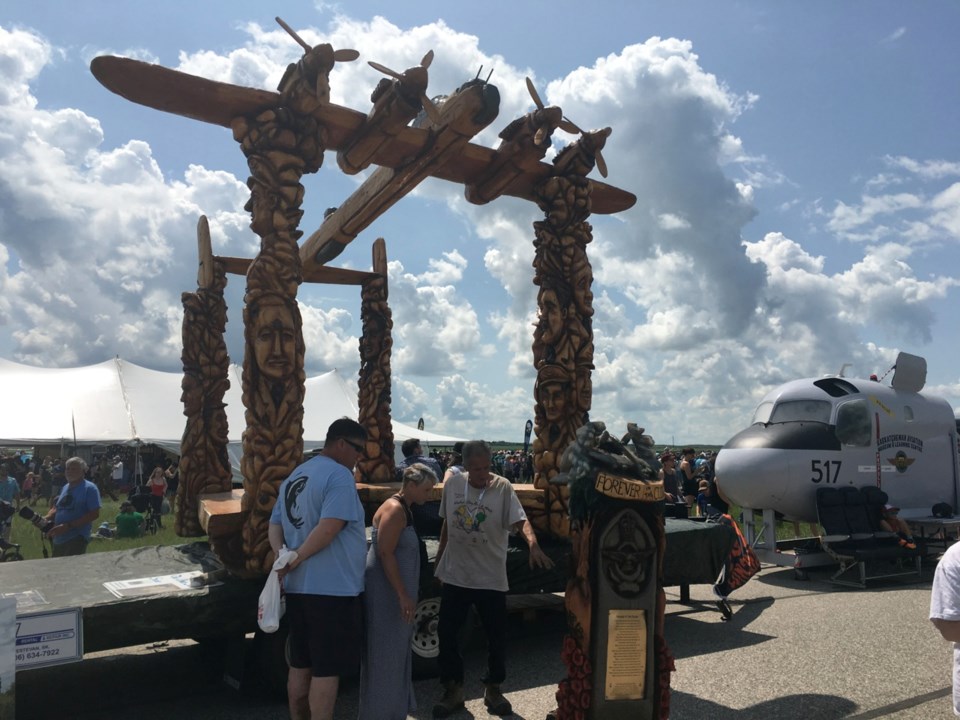Nineteen years ago, Marie Donais Calder began work on the Other Side series, which told the stories of her father Ed Donais’ time spent in Germany as a mechanic with the Canadian Army following the Second World War.
The first book in the series, the Other Side of War, was released in 2010. Now the 25th and final book in the series, The Other Side of Reunion, has been released.
“I believe I’ve spent a lifetime of research,” said Donais Calder. “It’s the sort of thing that I was always curious about, and as I tell my readers, my dad started showing me pictures from his album when he was in Germany when I was a little girl.”
The first 24 books in the Other Side series shared stories of Ed Donais’ relationship with a German family following the end of the war, and his interactions with his fellow Canadian soldiers. Many of the books also look at the life of Donais’ family back home in the Alida area while he was gone.
Book No. 25 shares the reunion of Ed Donais with his wife and three young sons. Donais Calder said he experienced many of the difficulties that soldiers face when they come home and try to become civilians and family members.
“It was a struggle, and it still is for our military. So we see the difficulties he had in trying to readjust. And we also see his progress, though, which is really heart-warming, and it’s just a fact of military life that when you do return to civilian life, everything is so different for you, and not always so easy.”
With the love and support of those around him, he was able to adjust, but he still spent a lot of time reflecting on what he had been through.
“We do get to see how he does respond and react and become a member of the family again,” said Donais Calder. “He came home to three little boys who did not even know him, and that was a challenge for him. It was a challenge for my mom, but they hung in there together.”
It’s hard for her to believe that she has wrapped up the Other Side series.
“When I see the 25 books spread out on a table, I can hardly believe that I did all that, that I accomplished all of that. I think if I would have known at the beginning that it would have been such a long series, I’m not sure if I would have taken it on.”
Donais Calder’s next project is to tell the story of the 21 Royal Canadian Air Force members who died in the plane crash of 1946 at the former Estevan Airport site. She has already spoken to family members of eight of the airmen; she hopes to speak with all 21, but she doesn’t know if that will be possible.
“I’m hoping to capture the essence of each of the 21 victims of that crash.”
She hopes to call the non-fiction work Together Forever in the Clouds, and she is optimistic that it will be released next year.
“It’s been fascinating and it’s been heart-wrenching,” said Donais Calder.
The air crash is also woven into the Other Side of Reunion, as she looks at how it affected her father and other Canadian Forces members.
“It was because they were much like brothers. Anyone who served, they were affected by each other’s, in this case, tragedy.”
It also chronicles how her father attended the funeral precession in Estevan, which attracted more than 3,000 people.
“They loaded the caskets three per truck onto army trucks, and brought them up to Fourth Street, and down to 12th Avenue, where they turned north to go to the railway station.”
Donais Calder was in Moose Jaw for the Saskatchewan Air Show on the weekend with all of her books.
Also at the event was the Forever in the Clouds monument, carved by Darren Jones, that pays tribute to the 21 airmen. It drew a lot of attention, and Donais Calder believes it created awareness about the crash.
“Their reactions were they were in awe. Whenever anybody mentioned that I was writing a book about it, immediately their response was ‘I want that book.’”
They seemed to understand what the idea was in creating the monument, that the airmen who died should not be forgotten.
The son of one of the pilots was there with the monument, and two nieces of another crash victim were also there. It allowed them to see how people react to the sculpture.
Donais Calder said she met with families of the crash victims, received more information from them, and let them know what she’s looking for from them as far as information and photos.
“It’s one thing to try to relate all of that to people via over the phone or email, but I took my research binder with me, and I think they have a clearer picture.”



